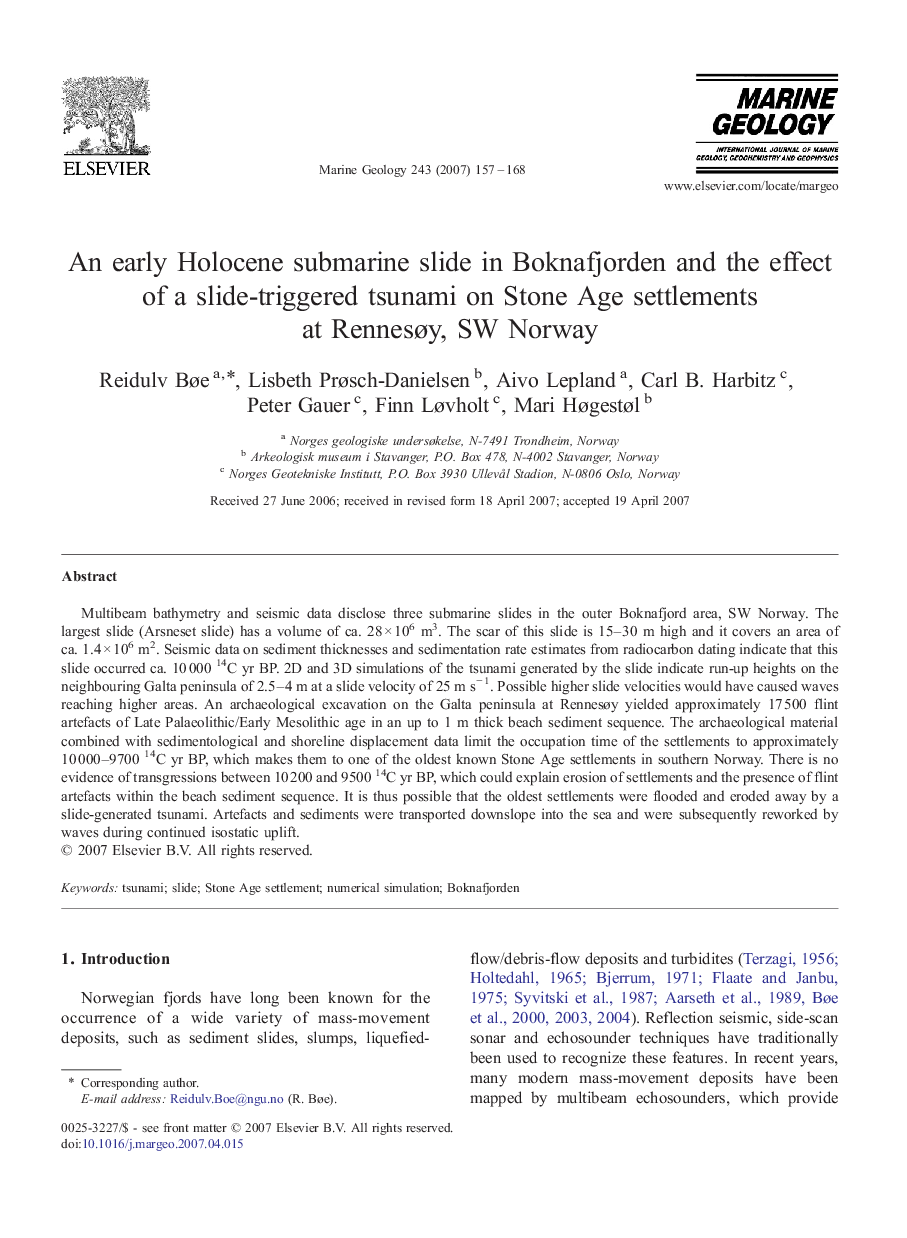| Article ID | Journal | Published Year | Pages | File Type |
|---|---|---|---|---|
| 4719368 | Marine Geology | 2007 | 12 Pages |
Abstract
Multibeam bathymetry and seismic data disclose three submarine slides in the outer Boknafjord area, SW Norway. The largest slide (Arsneset slide) has a volume of ca. 28 Ã 106 m3. The scar of this slide is 15-30 m high and it covers an area of ca. 1.4 Ã 106 m2. Seismic data on sediment thicknesses and sedimentation rate estimates from radiocarbon dating indicate that this slide occurred ca. 10 000 14C yr BP. 2D and 3D simulations of the tsunami generated by the slide indicate run-up heights on the neighbouring Galta peninsula of 2.5-4 m at a slide velocity of 25 m sâ 1. Possible higher slide velocities would have caused waves reaching higher areas. An archaeological excavation on the Galta peninsula at Rennesøy yielded approximately 17 500 flint artefacts of Late Palaeolithic/Early Mesolithic age in an up to 1 m thick beach sediment sequence. The archaeological material combined with sedimentological and shoreline displacement data limit the occupation time of the settlements to approximately 10 000-9700 14C yr BP, which makes them to one of the oldest known Stone Age settlements in southern Norway. There is no evidence of transgressions between 10 200 and 9500 14C yr BP, which could explain erosion of settlements and the presence of flint artefacts within the beach sediment sequence. It is thus possible that the oldest settlements were flooded and eroded away by a slide-generated tsunami. Artefacts and sediments were transported downslope into the sea and were subsequently reworked by waves during continued isostatic uplift.
Keywords
Related Topics
Physical Sciences and Engineering
Earth and Planetary Sciences
Geochemistry and Petrology
Authors
Reidulv Bøe, Lisbeth Prøsch-Danielsen, Aivo Lepland, Carl B. Harbitz, Peter Gauer, Finn Løvholt, Mari Høgestøl,
